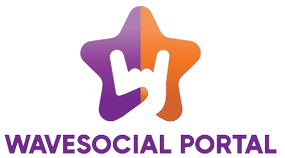Introduction to Ethical Hacking
In today’s digital age, the protection of digital assets is paramount for individuals and organizations alike. Ethical hacking, also known as penetration testing or white-hat hacking, has emerged as a crucial practice in the realm of cybersecurity. By proactively identifying and addressing vulnerabilities, ethical hackers help fortify systems against malicious attacks, ensuring the safety and integrity of sensitive data.
Understanding Ethical Hacking
Ethical hacking involves authorized attempts to breach system defenses to uncover weaknesses that could be exploited by malicious hackers. Unlike their black-hat counterparts, ethical hackers operate within legal boundaries and follow a defined code of conduct. Their primary goal is to enhance security measures by pinpointing areas that require improvement before they can be targeted by cybercriminals.
Key Components of Ethical Hacking
- Reconnaissance: Gathering information about the target system to identify potential entry points.
- Scanning: Using tools to detect open ports, services, and vulnerabilities within the system.
- Gaining Access: Exploiting identified vulnerabilities to test the system’s defenses.
- Maintaining Access: Ensuring continued access to evaluate the system’s resilience against prolonged attacks.
- Analysis: Reporting findings and providing recommendations to mitigate discovered vulnerabilities.
The Role of Ethical Hacking in Protecting Digital Assets
Digital assets, including sensitive data, intellectual property, and financial information, are prime targets for cyberattacks. Ethical hacking serves as a proactive defense mechanism to protect these assets by:
Identifying Vulnerabilities
Ethical hackers systematically assess systems to locate security loopholes that could be exploited. By identifying these weaknesses, organizations can take corrective actions to bolster their defenses.
Enhancing Security Posture
Through regular penetration testing, ethical hackers help organizations maintain a robust security posture. This continuous improvement ensures that security measures evolve in tandem with emerging threats.
Preventing Financial Losses
Cyberattacks can lead to significant financial losses due to data breaches, system downtimes, and reputational damage. Ethical hacking helps mitigate these risks by preventing attacks before they occur.
Ensuring Compliance
Many industries are subject to stringent data protection regulations. Ethical hacking assists organizations in achieving and maintaining compliance by demonstrating proactive security measures.
Benefits of Ethical Hacking
- Proactive Defense: Anticipates and addresses potential threats before they can be exploited.
- Cost-Effective: Reduces the financial impact associated with data breaches and cyberattacks.
- Improved System Security: Strengthens overall security infrastructure by closing identified gaps.
- Enhanced Reputation: Builds trust with clients and stakeholders by demonstrating a commitment to cybersecurity.
- Regulatory Compliance: Aids in meeting industry-specific security standards and regulations.
Ethical Hacking Methodologies
There are various methodologies that ethical hackers employ to assess and enhance system security:
Black Box Testing
Testers have no prior knowledge of the system, simulating the approach of an external attacker. This method assesses the system’s defenses from an outsider’s perspective.
White Box Testing
Testers have full knowledge of the system’s architecture, including access to source code and infrastructure details. This comprehensive approach allows for an in-depth security evaluation.
Gray Box Testing
Testers have partial knowledge of the system, combining elements of both black box and white box testing. This method strikes a balance between external and internal threat simulation.
Ethical Hacking Tools and Techniques
Ethical hackers utilize a variety of tools and techniques to conduct comprehensive security assessments:
- Nmap: A network scanning tool used to discover open ports and services.
- Metasploit: A penetration testing framework that aids in developing and executing exploit code.
- Burp Suite: A platform for web application security testing.
- Wireshark: A network protocol analyzer for monitoring and analyzing network traffic.
- John the Ripper: A password cracking tool used to test the strength of password policies.
Implementing Ethical Hacking in Organizations
To effectively leverage ethical hacking, organizations should:
Define Clear Objectives
Establish specific goals for penetration testing, focusing on key areas such as data protection, network security, and application integrity.
Engage Certified Professionals
Hire qualified ethical hackers with relevant certifications (e.g., CEH, OSCP) to ensure expertise and adherence to best practices.
Regular Testing
Conduct periodic security assessments to adapt to evolving threats and maintain a strong security posture.
Actionable Reporting
Ensure that ethical hackers provide detailed reports with actionable recommendations to address identified vulnerabilities.
Integrate with Security Policies
Align penetration testing activities with the organization’s overall security policies and procedures to ensure cohesive defense strategies.
Challenges in Ethical Hacking
While ethical hacking is essential, it comes with its own set of challenges:
Skill Shortage
The demand for skilled ethical hackers often exceeds the supply, making it difficult for organizations to find qualified professionals.
Evolving Threat Landscape
Cyber threats are constantly evolving, requiring ethical hackers to stay updated with the latest attack vectors and defense mechanisms.
Legal and Ethical Considerations
Conducting penetration testing must adhere to legal frameworks and ethical standards to avoid unauthorized access and data breaches.
Resource Allocation
Organizations must allocate sufficient resources (time, budget, personnel) to implement and sustain effective ethical hacking practices.
Future of Ethical Hacking
The role of ethical hacking is set to become even more critical as digital transformation accelerates and cyber threats become more sophisticated. Emerging trends include:
- Automation and AI: Leveraging artificial intelligence to enhance penetration testing and vulnerability assessments.
- Integration with DevSecOps: Embedding security practices into the software development lifecycle to identify and address vulnerabilities early.
- Cloud Security: Focusing on securing cloud-based infrastructures and services amidst the growing adoption of cloud technologies.
- IoT Security: Addressing the unique security challenges posed by the proliferation of Internet of Things devices.
Conclusion
Ethical hacking plays an indispensable role in protecting digital assets by uncovering and mitigating vulnerabilities before they can be exploited by malicious actors. As cyber threats continue to evolve, the importance of ethical hacking in maintaining robust cybersecurity measures cannot be overstated. Organizations that prioritize ethical hacking not only safeguard their valuable digital assets but also build trust and resilience in an increasingly interconnected world.

